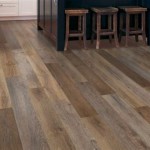How To Put Vinyl Flooring On Rough Concrete Slab
Installing vinyl flooring over a rough concrete slab requires meticulous preparation to achieve a smooth and durable finish. Uneven surfaces can lead to uneven floors and a compromised installation. This article provides a comprehensive guide on how to properly prepare a rough concrete slab for vinyl flooring installation, ensuring a successful project.
Preparing the Concrete Slab
The first crucial step is to adequately prepare the concrete slab. Begin by removing any existing flooring, debris, and loose materials. This ensures a clean and stable surface for the new flooring. Once the surface is clear, inspect it for any cracks, holes, or uneven areas. Cracks and holes should be patched using a concrete patching compound, allowing it to cure fully before proceeding.
For significant unevenness, a self-leveling compound is recommended. This compound spreads evenly over the surface, creating a smooth and level base for the vinyl flooring. Apply the self-leveling compound according to the manufacturer's instructions, ensuring it dries completely before moving on to the next stage.
Moisture Barrier and Underlayment
A moisture barrier is essential to prevent moisture from the concrete slab from damaging the vinyl flooring. This barrier typically consists of a 6-mil polyethylene sheet installed directly on the prepared concrete slab. Ensure that the sheet overlaps at least 6 inches at the seams and is secured to the floor using tape.
Next, install an underlayment layer. This layer provides additional cushioning and sound insulation, improving the overall comfort and performance of the vinyl flooring. Choose an underlayment appropriate for the type of vinyl flooring being used. Some common options include foam pads, cork underlayment, or a combination of both.
Vinyl Flooring Installation
With the subfloor prepared, the vinyl flooring installation can begin. The specific steps for this process vary depending on the type of vinyl flooring being installed. Generally, the installation starts with cutting the vinyl planks or tiles to size, then adhering them to the subfloor.
For sheet vinyl, the material is rolled out and secured to the floor using adhesive. Ensure the sheets are butted tightly together, with seams properly sealed to prevent moisture from infiltrating. For plank or tile vinyl flooring, the installation often involves a click-lock system for a seamless and secure fit.
Final Steps
After installing the vinyl flooring, it's essential to clean the surface and remove any excess adhesive or debris. This step ensures a clean and professional look. Once the floor is completely dry, it's ready to be enjoyed.
To extend the lifespan of the vinyl flooring, consider adding a protective sealant. This sealant helps to protect the floor from scratches, stains, and other forms of wear and tear.

How To Prepare A Concrete Floor For Vinyl Flooring Parrys

Vinyl Plank Flooring On Uneven Concrete

10 Beginner Mistakes Installing Vinyl Plank Flooring

Vinyl Plank Flooring On Uneven Concrete

How To Lay Flooring On Concrete Factory Direct

Guide To Lay Vinyl Flooring Over Floorboards

20 Tips For A Great Vinyl Plank Flooring Installation

A Beginner S Guide To Installing Vinyl Plank Flooring Dumpsters Com

Lvp Flooring Installation Over Concrete Subfloor Full Instructional Builds By Maz Flooret

Installing Laminate Flooring Over Concrete The Ultimate Guide Aa Floors
See Also







